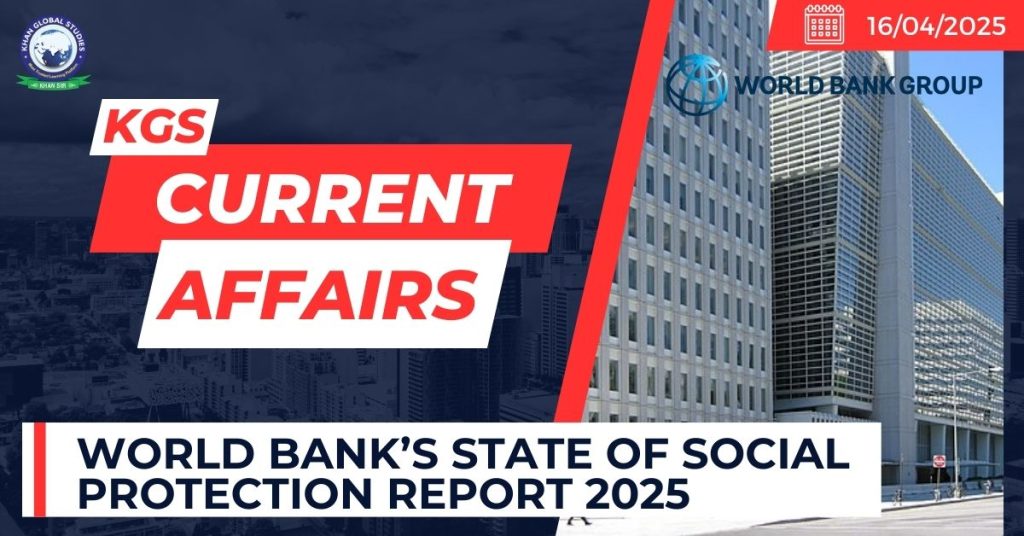Context:
According to the recent World Bank’s State of Social Protection Report 2025, nearly two billion people lacked adequate social protection as of 2022.
More on the news:
- These findings signal a crisis of inequality, as a significant portion of the global population continues to live without basic safeguards against poverty, climate change, economic shocks, and conflict.
- The report warned that such slow progress would impact the United Nations-mandated Sustainable Development Goals (SDGs).
Findings of the report:
Stark Inequalities in Social Protection Coverage:
- Low-Income Countries (LICs) face the most severe gaps, with over 80% of the population either lacking access to social protection or receiving inadequate coverage.
- Middle-Income Countries (MICs) have better coverage, but due to larger populations, 1.2 billion people remain unprotected—far more than the 500 million in LICs.
- Upper-middle-income countries perform significantly better, with only 11% entirely excluded and 6% receiving insufficient support.
Regional Disparities- Sub-Saharan Africa in Crisis:
- In Sub-Saharan Africa, over 70% of the population lacks any form of social protection, with only a small fraction receiving minimal aid.
- Globally, 88% of people in extreme poverty lack adequate or any social security—a figure that rises to 98% in LICs and 97% in Sub-Saharan Africa.
Slow Progress and Persistent Gaps:
- Data from 73 low- and middle-income countries (2010-2022) shows that social protection coverage increased from 41% to 51%, but this growth is too slow to meet rising needs.
- Most improvements come from social assistance programs (e.g., cash transfers, school meals, food aid).
- Despite progress, 75% of people in LICs and 58% in LMICs still receive no social protection.
- Social insurance (pensions, health, unemployment) is nearly absent in LICs (2% coverage) and minimal in LMICs (8% coverage).
Emerging Threats: Conflict, Climate Change, and Funding Gaps:
- By 2030, 60% of the world’s extreme poor will live in fragile and conflict-affected states (mostly in Africa and Asia).
- Climate change could push 130 million more people into extreme poverty by 2030, yet most social protection systems are unprepared to address climate-related losses.
- If current trends persist, it may take until 2043 to cover all people in extreme poverty and until 2045 to protect the poorest 20% of households.
Misdirected Spending and Missed Opportunities:
- Global subsidies (e.g., fossil fuels, agriculture) exceed $7 trillion annually but often benefit the wealthy rather than the poor.
- Redirecting even a fraction of these funds could dramatically expand social protection for vulnerable populations.
Therefore, the report called for building integrated systems that are shock-responsive, climate-resilient, and digitally enabled to ensure timely and inclusive support during future crises.

